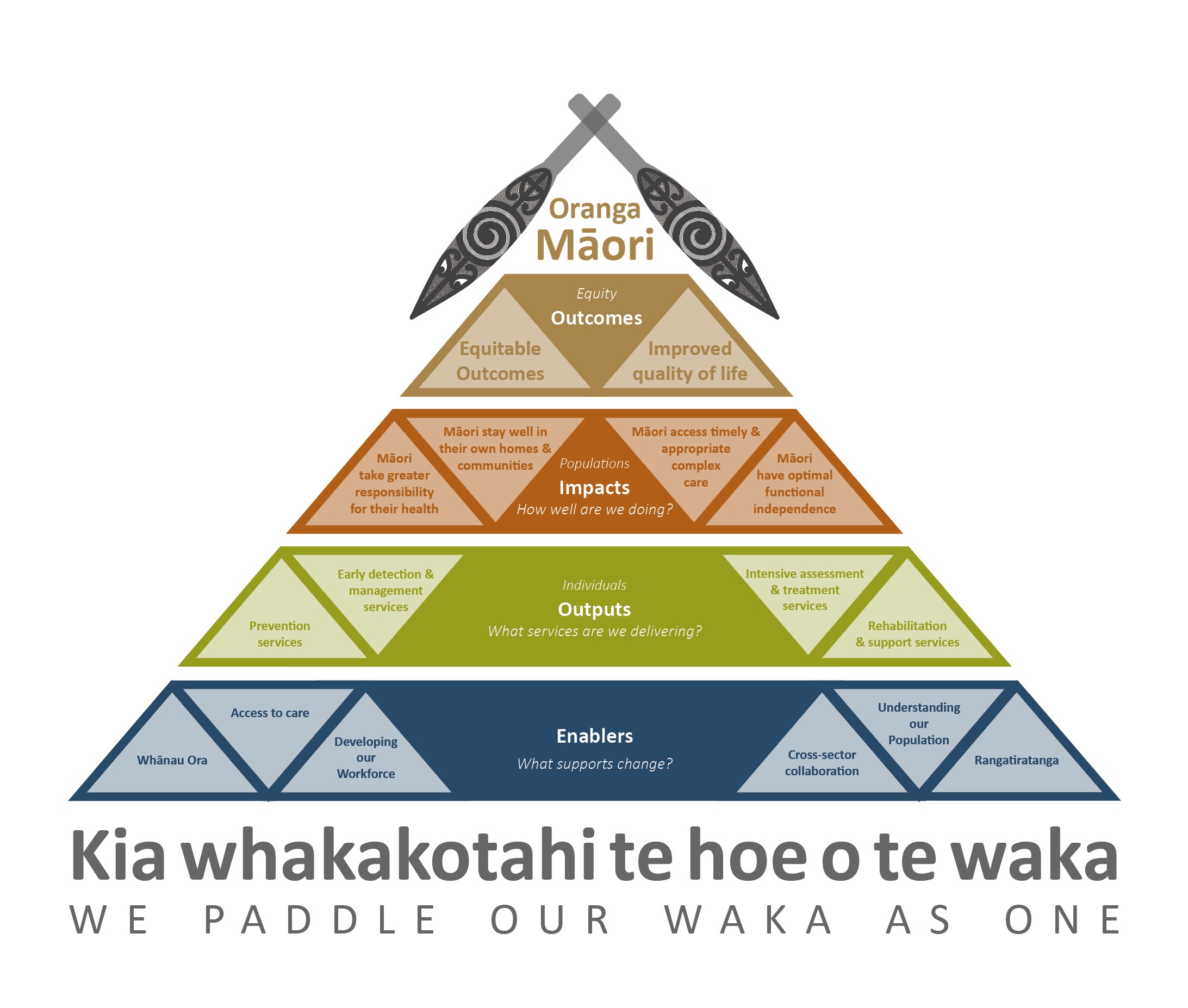"Kia whakakotahi te hoe o te waka"[1]
Background and rationale[2]
Canterbury Health service providers Canterbury District Health Board (CDHB), Primary Health Organisations (PHOs) and Non-Government Organisations (NGOs) aspire to achieving equitable health outcomes for Māori and support Māori families to flourish and achieve their maximum health and wellbeing[3]. In addition, the CDHB and PHOs are required to have plans for Māori health.
Although each organisation is striving to contribute to these aspirations, there have been barriers to achieving their goals. One of these is that while we are on the same boat, there has not been a strong sense that we are all paddling in the same direction. To date plans have not been coordinated and there has been limited collective effort to achieve shared outcomes.
Following a series of discussions between the CDHB and PHOs, a strong commitment has developed between these parties to have an overarching framework that identifies shared outcomes and priority areas, acts as a basis for organisation work plans and encourages collective efforts that make a difference for Māori whānau.
Purpose
The purpose of the Canterbury Māori Health Framework is to establish shared outcomes, shared priority areas, shared language and common understanding so that we can better achieve our goal of health equity for Māori by paddling the waka in the same direction and in unison.
Governance of the framework
Te Kāhui o Papaki Ka Tai and Manawhenua ki Waitaha.
Partners in the framework
In the first instance the partners in this framework are those that are required by legislation to have a Māori health plan: the CDHB and divisions of the CDHB (Community and Public Health) and Primary Care Organisations (Rural Canterbury, Christchurch PHO and Pegasus Health). The intention is to be fully inclusive and to widen this partnership to include other partners such as Non Government Organisations.
Related plans
CDHB Māori Health Actions Plan 2013-2014
Canterbury Clinical Network Plan 2013-2016
Rural Canterbury PHO, Christchurch PHO and Pegasus Health Māori Health Work Plans
Community and Public Health (CDHB) Māori Health Plan
The framework
The framework is an outcomes framework. That is, the framework identifies the various layers of activities and strategies that contribute to our shared outcomes of equitable health outcomes and improved quality of life for Māori. The framework also identifies indicators that we can use to measure progress towards and achievement of the shared outcomes (see Appendix 2: Māori Health Framework with indicators to see details of indicators).


Priority areas
There are many areas of focus that our collective actions could contribute to. It was decided that in the first instance that the areas of focus would be those where there were differentials in access or outcomes for Māori, where indicators existed that were readily measureable in order to determine progress and a particular focus would be placed on vulnerable child and youth:
How this framework will work
Partners in this framework will:
Develop organisational work plans that are based on the framework and priority areas
Work together to achieve the improvement in shared priority areas
Be open to new ways of working to achieve outcomes
Undertake to have good communication and regularly report on progress
Review the framework annually late (October/November) in the year so it may be linked to the plans of the partners for the following year.
Appendix 1: Concepts and definitions
Term | |
| Equity | Equity in health means that people's needs guide the distribution of resources and opportunities that promote wellness and well-being. It is about achieving the same level of outcomes for people. This may mean a different level and type of effort. It is about addressing the bias in our systems. |
| Whānau | Whānau (kuia, koroua, pakeke, rangatahi and tamariki) is recognised as the foundation of Māori society. As a principal source of strength, support, security and identity, whānau plays a central role in the wellbeing of Māori individually and collectively. The whānau is a political unit, below the level of hapū and iwi. |
| Whānau Ora | Whānau Ora has come to mean the governmental policy that enables social and health agencies to work cross sectorally supporting the implementation of social and health programmes. However, in this plan Whānau Ora is a concept that is about whānau being empowered to make their own decisions around how to improve their overall wellbeing. |
| Flourish | Flourishing is about thriving, prospering, blossoming and growing and is about more than equitable outcomes. |
| Wellbeing | Wellbeing is a state in which an individual/whānau can realise their own potential, can cope with the normal stresses of life, can work productively and fruitfully, and are able to make a contribution to their community |
| Collective impact | Different organisations taking joint responsibility for efforts to improve outcomes in mutually identified areas |
| Rangatiratanga | Self determination best describes Rangatiratanga. By virtue of their indigenous rights as tangata whenua, Māori freely determine their political status and freely pursue their economic, social and cultural development. Whānau, hapū and iwi take the lead so that Māori live and develop in a Māori way that is meaningful to them. |
Translations
We paddle our waka as one
Definitions for terms used in this plan can be found in "Appendix 1: Concepts and definitions"
He Korowai Oranga: Māori Health Strategy http://www.health.govt.nz/publication/he-korowai-oranga-maori-health-strategy